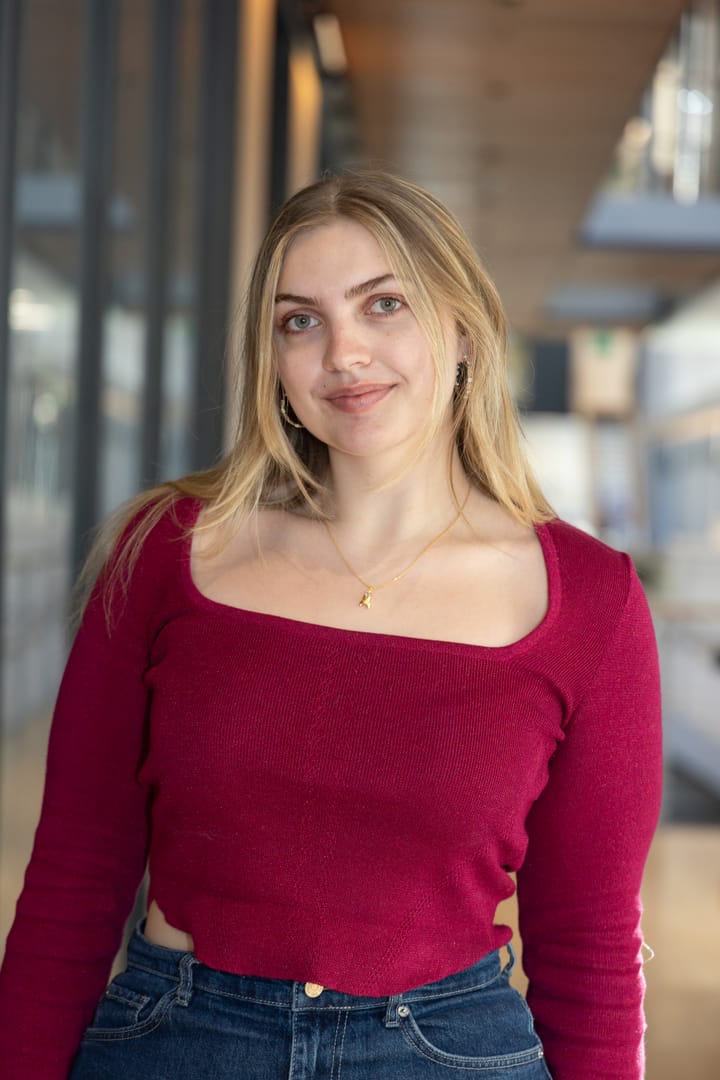Arzoo Rajpar: Crafting Art, Empowerment, and Agency
Arzoo Rajpar has created intersections between her passion for design and her interest in creating community-based solutions, uplifting herself and those around her.


“I think that art can be whatever it is,” said Arzoo Rajpar ’22, “but I was interested in making it meaningful in the ways I wanted to.” Even just an hour-and-a-half-long conversation with Rajpar provides a strong sense of how she brings this idea to fruition in every community she reaches, from her home country of Tanzania to Amherst College. Rajpar cares deeply about making change through art, design, and other forms of creativity, and the approach she takes centers on the people and places that have shaped her life — stories that she carries with her wherever she goes.
Learning to Make Change
Rajpar grew up in Dar es Salaam, a city on the coast of Tanzania. She reflected lovingly on the city, speaking of its beautiful beaches and tropical climate. “I definitely love the city where I’m from,” she said. Raised by a single mother alongside her twin sister, Rajpar lived in Dar es Salaam until she moved to Mombasa, Kenya, to attend boarding school.
Rajpar is of South Asian descent, but her family has been living in East Africa for four generations now. Both of the cities that Rajpar has lived in, Dar es Salaam and Mombasa, have significant South Asian populations due to their long histories of immigration from the western part of India, among other places. “There’s a very unique culture and cultures that are present in those places,” she said. “Through food and music, and the way people dress, and architecture, they’re very unique places.”
Many of Rajpar’s passions, including her love for art and community engagement, are rooted in the environments in which she grew up.
“I come from a family of musicians and singers. Everyone in my family can sing, and we all love to dance,” she said. “It’s just something that I grew up surrounded by and kind of was encouraged to get into it.”

Even when she was young, Rajpar had what she called a “save-the-world attitude.”
“My personality was very like, ‘Why aren’t we doing anything about this?’” she said. As she’s gotten older, this trait has remained consistent. Jesmyda Viyano ’22, who has known Rajpar since their first year at Amherst, said, “One of the things that really struck me about her is that she stands up for what she believes in. She speaks up and backs it up with her actions.”
While Rajpar says she is a bit less “idealistic” in this passion now, her passion for making change has remained steady throughout her work in high school and at Amherst. Among many of the projects she undertook in high school, Rajpar made a short documentary film about people with albinism and the stigma and discrimination they face. As the documentary began to raise awareness about the issue, she continued the work by writing one of her final high school papers on the topic, working alongside the local rotary group to raise money.
Rajpar described this work as being a “blending [of] my love for visual arts, or photography and film, [while] creating impact.”
Reckoning With Amherst
After graduating high school, Rajpar decided to leave her home and move 7,000+ miles to Amherst to begin college.
Upon starting, Rajpar soon began to realize that her background distinguished her from many of her peers but also set her apart from much of what she knew back home. “Now I have this really different experience that not many people can relate to. I have a lot of friends who can, but also a lot of friends who just didn’t relate to that. Even explaining things to my family, they’d be like, ‘What are you talking about?’” She described feeling a sense from back home that “Oh, now you’ve gone to America, and you think you can talk about whatever you want to talk about. Now you have these ideas that don’t align with our values.”
At Amherst, too, Rajpar experienced some dissonance as well. “I think I’m a very confusing person to the typical American eye,” she said. “Because I’m from Tanzania, and [people are like,] ‘Oh, well, you look Indian.’ And I’m like, well, I am Indian, but I’m not from India. I am both of those things. Coming here [to Amherst] was really difficult, actually. Because I felt like I always had to justify my identity. I remember going home and really thinking about that and being like, I’ve never felt like this before, but now I feel like it. Where do I belong now?”
Much of Rajpar’s time at Amherst has been spent creating a sense of belonging for not only herself but others around her.
As Cynthia Henry ’22, one of Rajpar’s close friends and a fellow Tanzanian, described it, “One thing about Arzoo is that she creates community wherever she is.”
As president of the International Students Association and program coordinator for the Center for International Student Engagement (CISE), Rajpar said that some of her best memories at Amherst are associated with the international student community. “I have my international community, and they understand where I’m from,” she said. “To know that that community will hopefully keep existing is really reassuring. I’ll speak for myself, it’s helped me make the most of the experience and have fun and look back on positive memories.”
For everything she’s gained from the international community at Amherst, Rajpar has contributed just as much. “As a program organizer at the Center for International Student Engagement, [Rajpar] thoughtfully developed her programs to help international students feel safe and comfortable when engaging with topics of social identities and international experiences,” said David Dongseong Ko, director for the CISE. “Arzoo had the highest skill set to incorporate informative workshops, community building, resource sharing, and opportunities for international students to explore and adjust to the Amherst campus. Her advocacy, dedication, and love for international students are truly inspirational. We will miss her dearly.”
Rajpar has also been an active member of the African Caribbean Students Union (ACSU), serving as the African chair during her junior year. She is also a choreographer and dancer in ACSU Dance — another way in which Rajpar uses art and creativity as a means for change-making.
Rajpar recounted that over her time at Amherst, she eventually overcame the initial feelings of dissonance she experienced when she reached a point where “I think I just stopped caring” and realized the burden of explaining or validating her cultural and racial background didn’t have to rest on her shoulders. In the end, she said, “I think the people that mattered the most didn’t care as much as I thought they did or weren’t judging me, or invalidating me, thinking I was less something. They were viewing me the exact way I thought of myself, and that’s what mattered.”
Designing Space for Passion in Architecture
Alongside her work to create community, at Amherst Rajpar has developed new academic interests that aligned with her love for activism and design. A math and architectural studies major with a Five College Certificate in African studies, Rajpar’s curiosity and passion about the place she comes from shines through in her academic work in addition to her activism. In fact, her work blurs the line between those two ideas in the first place.
Upon first arriving at Amherst, Rajpar knew she had some interest in architectural studies, so she figured she would try taking some classes. She came to enjoy all of the classes she took in the department, in part because “you can kind of create your own pathway with it,” and she was able to concentrate on classes that focused on low-income housing, natural-disaster relief, and working with Indigenous communities, among other topics that emphasize how design relates to the telling of history and exacerbation or easing of social issues.
Rajpar referenced several architectural studies classes that emphasized the use of critical thinking. “I’ve always been a very critical thinker. If someone says something, I’m like, ‘Hmm, why are you saying this?’ That’s just how I am,” said Rajpar. “I’m also very forthright about what I think. And I think those classes allowed me to kind of embrace that.”
Olufemi Vaughan, Alfred Sargent Lee ’41 and Mary Farley Ames Lee professor of Black studies, highlighted Rajpar’s use of critical thinking. “In many academic and intellectual interactions with her, Arzoo consistently explored major social, political, and economic problems confronting contemporary African societies,” he said. “In wide-ranging discussions and scholarly readings, Arzoo’s works underscore African human agency as the critical space to explore meaningful solutions to the challenges confronting African communities.”
Building on this passion for critical thinking and correcting narratives of empowerment, Rajpar’s thesis in the department centers around Zanzibar, an island off the coast of Tanzania where her great-grandparents first moved when they immigrated to East Africa from India. Her thesis focuses on the “impacts of tourism on the physical, architectural, and cultural landscape of urban Zanzibar,” and she argues that “holistic portrayals of history” are needed to “prevent Orientalism and exoticizing the past, and brushing over things that have happened to people.”
“That would help us acknowledge the systems of oppression in place, that have been in place and are still in place, and also tell real stories, and allow local people to tell their actual stories,” she said. She also noted that thinking through this framework will allow for more effective development projects in the future.
Looking Ahead, Returning Home
Rajpar hopes to continue impactful work like this after graduation. “I definitely always knew that I wanted to play a role in actually making systemic change,” she said. “I’ve realized that there is so much to learn about where I’m from and the African continent in general.”
She hopes to pursue a career related to development and design to uplift communities and provide real solutions for housing and poverty. She recounted two internships from the summers after her sophomore and junior year. During the summer of 2020, she worked at a construction firm in Tanzania where she helped design a low-income community housing project. Through the experience, she learned about the way that “low-income housing has to be accessible … you can’t just put people in the middle of nowhere and expect their socioeconomic status to increase.” The following summer, she worked at a healthcare NGO where she learned that “it’s usually the simpler designs that are inspired or built through active participation from local communities, based on what the local community actually wants — not built for, but by, people — that have had the most success.”
Rajpar hopes to continue work like this, and part of that, for her, means going back home. “I don’t want to be one of those people who just leaves and never goes back,” she said. “I want to go back … and use what I’ve learned … and actually do something. I grew up always being told, ‘There’s nothing good that’s going to happen for you here when you come back home,’ ‘This country is going nowhere,’ and all these things. I don’t want that to be the narrative anymore. I do love my country, and I am grateful for everything I’ve gotten from it. I want to play a small role in breaking that cycle.”
It is this passion for the places she is connected to and her desire to make a difference in the world through building power and solidarity within — not outside of — her community that strikes me as so inspiring about Rajpar. Wherever she chooses to bring this passion next, I am confident it will continue to strengthen and uplift the community there.





Comments ()